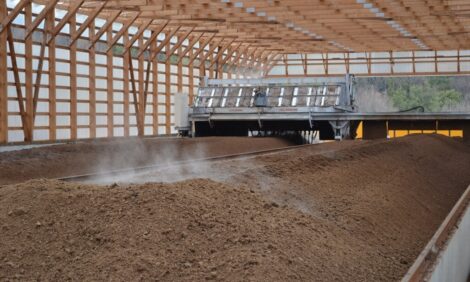



Footpad Dermatitis in Dutch Broiler Flocks
Footpad dermatitis was frequently observed in Dutch fast-growing broiler flocks, with around two-thirds of the bird studied having some degree of lesions, according to new research from Wageningen University. Among the many factors that affected the severity of the condition were breed, thinning of flocks, age at slaughter, slaughter plant and the source hatchery.In some European countries, footpad dermatitis (FPD) is measured as an indicator of broiler welfare. Prevalence and seasonal variation of FPD was determined within broiler flocks (fast-growing breeds) in the Netherlands by Ingrid de Jong and colleagues at Wageningen UR Livestock Research.
In a paper published recently in Poultry Science, they explain that samples were taken from 386 Dutch flocks at eight slaughterhouses during a period of one year. Prevalence of footpad dermatitis was related to background information gathered using a food chain certification scheme to identify possible factors of influence.
On average, 35.5 per cent of the broilers had no lesions, whereas 26.1 per cent and 38.4 per cent had mild or severe lesions, respectively.
Season, age, thinning of flocks, slaughter age, breed, slaughterhouse, and the interaction between thinning and slaughter age significantly affected severity of FPD. Peak flock FPD scores occurred in flocks where day-old chicks were placed in March and December, whereas flocks placed in warm months - between June and August - displayed lower flock FPD scores.
Generally, birds sent to slaughter when thinning a flock displayed less severe FPD than birds from completely depopulated flocks. Severity of FPD decreased with age.
Because poultry farmer, hatchery, veterinary practice and feed manufacturer were included in the model as random factors, it was only possible to assess their contribution relative to each other. The broiler farmer had the largest contribution. Also, a large contribution was found for hatchery, perhaps indicating that broiler quality is important. No relationship was observed between FPD and mortality.
Across farms, less severe FPD was observed on farms using antibiotics. However, within farms, FPD was more common in flocks where antibiotics had been used compared with flocks that did not require antibiotic treatment.
The Wageningen researchers concluded that FPD was frequently observed in Dutch fast-growing broiler flocks, and many factors had significant effects on severity of FPD, such as breed, thinning of flocks, age at slaughter, slaughter plant and hatchery.
Reference
de Jong I.C., J. van Harn, H. Gunnink, V.A. Hindle and A. Lourens. 2012. Footpad dermatitis in Dutch broiler flocks: Prevalence and factors of influence. Poult. Sci., 91(7):1569-1574. doi: 10.3382/ps.2012-02156
Further ReadingYou can view the full report (fee payable) by clicking here. |
September 2012








